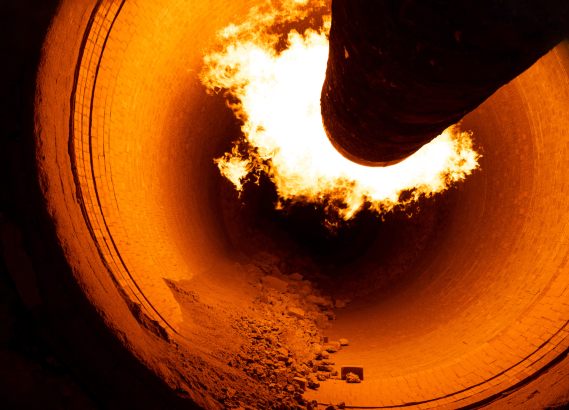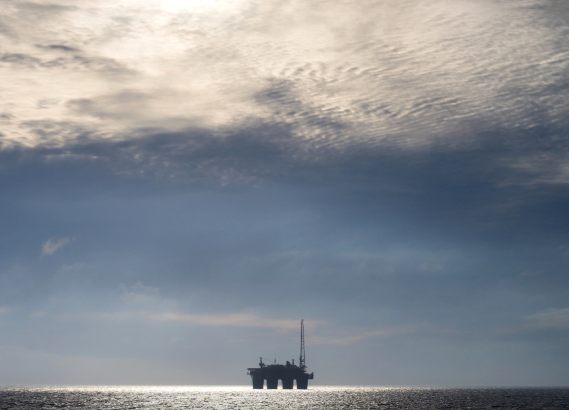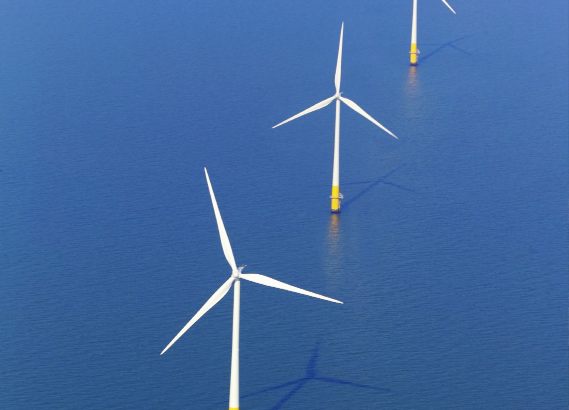Interview with Mercedes Maroto-Valer, Director of the UK Industrial Decarbonisation Research and Innovation Centre (IDRIC).
What are the most urgent measures we need to take to curb climate change?
There is no single option that will solve everything. We have to develop a range of solutions and whatever option we consider, the need for urgency must always be kept in mind. When we talk about climate change, we generally think of 2050, which is the deadline for achieving carbon neutrality. However, the really key year is 2030, by which time we must have achieved a 50% reduction in global carbon dioxide emissions. That is the urgency.

We are emitting billions of tons of CO2 globally. To reduce these emissions, there are different solutions depending on the type of sector that emits CO2 , the amount of CO2 emitted or even the geographical location of the emitting company. We have to look for solutions that are quick, due to the urgency of 2030, but at the same time are scalable and will allow us to achieve a just transition.
Decarbonization of the economy is key. Which sectors are easiest to decarbonize and how decarbonized are they today?
To meet emission reduction targets and achieve net zero, everything must be decarbonized. In recent years we have managed to reduce many of these CO2 emissions because one sector in particular, the electricity generation sector, has been decarbonized. Thanks to renewable energies we have managed to reduce our CO2 emissions from electricity production significantly. And although nothing is easy in the fight against climate change, this is one of the easiest tasks.
What we are left with now is increasingly difficult, to the point that there may be some sectors that we will not be able to decarbonize. That is why we have started to capture CO2 directly from the atmosphere.

Industry is one of the most difficult sectors to decarbonize, as is the transportation sector, especially the aviation sector. This is also true for the thermal process sector such as heating. There are several reasons why these sectors are difficult to decarbonize. For example, the materials used in their processes emit CO2 precisely during the process. Thus, even if we use renewables for all the energy supply that a cement plant needs, for example, the cement plant will continue to produce CO2 , because it is produced in the transformation of the materials used in these factories (by subjecting some raw materials such as limestone to high temperatures). Concerning the aviation sector, it is very difficult to decarbonize long-haul flights because there are no batteries or electric options to replace the fuels currently used.
What we are doing is analyzing which of these sectors can be innovated in order to decarbonize them.
What role do CO2 capture technologies play in this process? What do they consist of?
There are several types of technologies within the framework of CO2 capture, storage and use. These are called CCS technologies.
When CO2 is produced in a thermal power plant or in a steel or cement plant during the production of steel, cement or fuels, it is not emitted alone, but rather in conjunction with a number of other gases. Most of these other gases (e.g. nitrogen) are quite harmless.
The first thing to do is to capture that CO2 and separate it from the gases with which it is mixed, which can be emitted into the atmosphere because they are not as risky. Once it is captured, it has to be transported to the place where it will be stored or used. It is therefore a process involving different technologies.

Even within the capture process itself there are several options. It can be captured using filters or membranes, using a solvent that dissolves the CO2 but not the other gases, or even using filters similar to those you may have at home to purify water, which retain the CO2 but let the rest of the gases pass through.
The choice of the most appropriate technology will depend on how the CO2 is produced, the temperature, pressure or carbon dioxide concentration conditions.
There are also technologies to capture CO2 directly from the atmosphere. Are these the same technologies?
To some extent, yes. Some of the materials used to capture CO2 from a specific emission point are similar to those used to capture CO2 from the air. The difference is that here the CO2 concentration is much lower (today around 412 ppm compared to values that can reach 30% when it is captured directly in industry, for example).

Which of the two options is better? It depends. There are cases of specific points where we have a lot of CO2 being emitted in an industrial sector and we have to try to recover it from there. There are other cases in which, no matter how much we do, we will not be able to capture it. This is the case, for example, in the automobile sector. It is very difficult to create a system for capturing, transporting and storing CO2 from a car. In that case, the most appropriate option will be to capture that CO2 once it has reached the atmosphere. This is more technologically challenging, as the more dilute concentrations are captured, but the basic principle from a chemical engineering point of view is very similar.
At present, how much CO2 is being captured and how much would need to be captured to achieve climate neutrality? Are we on the right track?
Not enough is being captured. Today we are capturing around 40 million tons of CO2 . That may sound like a lot, but we have to put this figure in perspective. Globally, we emit about 35 billion tons.
However, these are technologies that we know can be implemented. Since 1996, for example, a carbon capture and storage project has been underway in Norway that is capturing close to one million tons each year.
CO2 capture and storage could contribute to slowing climate change by removing some 6 billion tons of carbon from the atmosphere. But we need to go a step further and develop and deploy these technologies at a much faster pace than we have done so far.
And how is that done?
These technologies have been applied mainly for CO2 abatement in thermal power plants or in oil and natural gas production. Now what we are doing is rolling out these technologies in the industrial sectors we talked about above, such as cement or steel, sectors that are difficult to decarbonize and where these technologies have not yet been applied.
There is a level of innovation where we can still contribute to lowering costs and risks and accelerating roll-out of these technologies. It is being done, but still at a slow pace, and that is where innovation plays an important role. For half of the global emissions cuts, we do not yet have a technology that can be implemented.
Capturing and storing CO2 also allows us to produce hydrogen that is low in carbon as well as produce fuels for the aviation sector, another area that is very difficult to decarbonize. So it allows us to play with various types of CO2 emitters. The problem is that we have not yet managed to deploy the technology in most of these carbon emitters. We need to achieve a much larger and much faster deployment than we have achieved so far.
What is the general attitude of the different industrial sectors towards decarbonization?
This has changed a lot. There is greater awareness in the industrial sector of the need to carry out an energy transition. Companies are clear that they cannot continue doing things the same way as before, although they may not have decided what path they need to follow to do so, what technologies can help them or how to finance this transition. This is exactly where innovation can help.
Today, there are very few companies, especially if they operate in international markets, that do not have a sustainability plan. It doesn’t mean that they have determined exactly how to be more sustainable, but that is where we have to help them.
Companies have also realized that if they can produce with lower emissions, they will generate a new industry. In the UK, for example, it has been estimated that if we manage to use carbon capture, storage and utilization technologies for everything that can be used, up to 50,000 jobs could be generated by 2030. We must therefore work to find the best solution for each industry.
What is done with the CO2 that is captured? How do we “get rid” of it and make sure it does not go back into the atmosphere?
The first thing to do is carefully study the sites that can really serve as CO2 storage sites. Generally, these are deep geological deposits where there is saline water, which means that this water is not suitable for human consumption. A depth study is then carried out, because the greater the depth, the more the CO2 is compacted, which makes storing more CO2 in a smaller area possible. In addition to the depth, the geological formation must have a kind of cap that prevents the CO2 from moving upwards.
Many of these geological formations have previously contained natural gas. What they have done is to extract the natural gas and introduce the CO2 . Sometimes, as the CO2 is introduced, a little more natural gas is recovered. This is called Enhanced Gas Removal (EGR). And, apart from carefully analyzing where the CO2 is going to be stored, monitoring and verification processes are carried out to check that the carbon is there.
Another option we have is to use the CO2 that has been captured to produce chemicals or fuels. The problem here is that, in the case of chemicals for example, these are very small markets, without the capacity to use all the CO2 captured. This would be different if we were able to convert that CO2 into fuel, because then we would have much larger markets. However, this technology is not yet sufficiently developed and deployed to say that it is the way to combat climate change.
For all the measures that countries are adopting to have a real effect on climate change, a global commitment and collaboration is essential. Does this collaboration really exist or is each country “playing its own game”?
During the UN Climate Change Conferences (or COPs) such an expectation is generated in the media that it seems that all problems will be solved there and that if they are not solved at that moment they will not be solved ever or until the next COP. And, although these summits are very important due to the fact that decisions are taken at a global level, the reality is that intense work is done before, during and after them. The thing is that this work isn’t as visible.

Today, many countries, companies and cities have made commitments to reach zero emissions. What we still lack in many of these commitments is not so much ambition or a target, but action. And this is a daily challenge. If we are to reach the goal of reducing emissions by 50% by 2030, 2020 has to be the decade of action.
What is really important is to see how we can help all these companies, cities and governments to establish a sufficiently detailed roadmap to meet these objectives. And we are making progress on that, albeit slowly.
We also need to be very realistic: we are going to exceed the 1.5 degree increase in the planet’s temperature, a goal set in the Paris Agreement. With what was achieved at COP26 in Glasgow, we will drop from the current 2.7 degrees to 2.4 degrees, a drop that was acknowledged to be insufficient. As a consequence, the nationally determined contributions, i.e., the emission reduction commitments of each country, will have to be reviewed by the countries before COP27 (previously they were reviewed every 5 years). The important message being conveyed is that although we are on the right track, we are not going to get there, and therefore we must all review what we can do and increase our commitments.
You are Director of the Industrial Decarbonization Research and Innovation Centre in the U.K. What does your work involve, and what lessons do you think could be transferred to other countries?
Out of all the sectors that we need to decarbonize, the industrial sector is a very important and difficult sector to decarbonize. In the UK, emissions from the industrial sector represent about 20% worldwide but at the same time it is a sector that generates 9% of the country’s GDP. So it is a sector that has its problems because it produces CO2 and yet at the same time it is a very necessary sector. Not just to produce steel or cement but also for renewable energies because, for example, windmills need steel and cement.
In 2021, the United Kingdom was the first country in the world to publish a strategy focused on industrial decarbonization. Within that strategy, budgets were allocated to carry out infrastructure projects and create roadmaps for different sectors. Additionally, there is a research and development center to support the infrastructure plans and roadmaps.
At the end of 2019, I was selected to lead that research center. In 2020 we defined the center’s objectives and started to develop the plans. And since 2021 we are already developing and executing actions. We manage a total of 142 partners, more than half of which are companies in the industrial sector and we aim for the UK to be the first country in the world to have a cluster, an industrial region, with net zero emissions, by 2040. During the 2020s we will launch two low-carbon industrial zones. In 2030 we will add two more and by 2040 we will have one that will be net zero.
Not only do we work with the technology sector, but we also understand that these technologies need a regulatory framework and financial models. And putting all these elements together is when you really get an industry that thrives.

The aim is to attract investment to the UK because these are going to be leading sectors where technology has been developed and proven. The aim is to maintain the industry, create new jobs, attract investment and export technology.
The government has invested £210 million, the private sector £250 million and £1 billion has been added to this for CO2 capture and storage projects, of which two have already been identified and have already started to be developed in recent months. This represents a unique opportunity to boost and accelerate these technologies.
This is not an expense or a cost but an investment. I like to say that “he who invests, prospers”. And the way to prosper is by investing in innovation and investing in the energy transition.
What lessons from the UK could be transferred to other countries?
What is essential for any country is that the government, companies and universities work together and in a coordinated manner. Companies, the government and the financial sector come to the Industrial Decarbonization Research and Innovation Center with a specific need, and what we do is identify, among the 23 universities that work with us, the best researchers and the best ideas. And we all work together on a daily basis. By working side by side, what we achieve is that these solutions are put into practice much sooner.
The key is for research, innovation, business and the financial framework to come together from day zero of a project’s inception, co-creating ideas and developing and implementing solutions together.
Comments on this publication